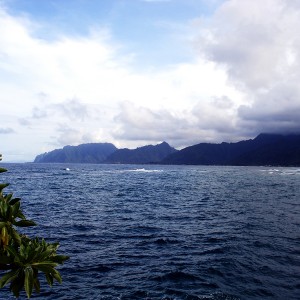Federal Water Tap, April 15: Climate Change Had Little Role in 2012 Drought; President Obama’s Budget
The most severe drought in 117 years of recordkeeping on the Great Plains came quickly, without warning, and without any dominant cause, according to an analysis by university and government scientists. It was largely not a result of climate change, they claim, and it was not the result of the drought conditions in Texas from 2011 creeping northward.
The drought – a “climate surprise” as the authors whimsically describe it – happened because weather systems that transport moisture from the Gulf of Mexico to the plains failed to deliver. Moisture deficits in the local atmosphere also play a role.
Rainfall, however, was only half of the equation. The research team, led by the National Oceanic and Atmospheric Administration, notes that the extreme heat accompanied the cloudless skies. Average temperatures across the six-state region were not as high as the Dust Bowl years, but the heat still resulted in increased evaporation that further dried out soils.
As with any analysis of a complex phenomenon, the study, which used only one climate model, has detractors. Kevin Trenberth, a climatologist at the National Center for Atmospheric Research told the Associated Press that climate change was a factor.
“This was natural variability exacerbated by global warming,” Trenberth wrote in an email to the AP. “That is true of all such events from the Russian heat wave of 2010, to the drought and heat waves in Australia.”
Up and Down Budget
Some water programs fared better than others in President Barack Obama’s budget for fiscal year 2014.
The Environmental Protection Agency’s budget would decrease by 3.5 percent compared to fiscal year 2012 – the last year with a regular budget – but the two funds that provide low-interest loans for drinking water and wastewater projects would be cut by 20 percent, continuing a recent decline. According to the EPA’s budget message, these funds will be targeted at “small and underserved communities with limited ability to repay loans.” Here is the full EPA budget.
Water programs in the Department of the Interior get a boost. The Land and Water Conservation Fund would see mandatory spending of $US 200 million on those two practices. The president aims to increase that to the authorized limit of $US 900 million by 2015. The budget for the U.S. Geological Survey will increase slightly. It includes new money for more than 300 stream gauges and funds to move ahead with a national groundwater monitoring network.
Flagstaff Watershed Protection
Forests near Flagstaff, Arizona will be thinned and certain areas will be burned to reduce to the fuel load under a National Forest Service plan to protect the city’s water supply from wildfires and flooding. In November, Flagstaff residents voted to issue $US 10 million in bonds for the Flagstaff Watershed Protection Project. The Forest Service will lead an environmental review of the project. Comments about scope of the review are due by May 13 and should be emailed to comments-southwestern-coconino-flagstaff@fs.fed.us.
Water for Tribal Homes
Five federal agencies have signed a new memorandum of understanding to collaborate on providing safe drinking water and sanitation to homes on tribal lands. The agreement focuses on developing the technical skills and management structures necessary for an enduring system.
“It’s more than just access to water – it’s access that is sustainable,” an official in the U.S. Department of Agriculture’s water program told Circle of Blue.
The program’s goal is to reduce by half the number of homes without access to safe drinking and sanitation by 2015, over a 2003 baseline. That goal is some ways from being met. The most recent figures show that the share of tribal homes without access has dropped from 13.9 percent in 2003 to 12.1 percent in 2010.
Water Rights for Ski Areas
The Forest Service will hold three public meetings this week to discuss water rights for ski areas that operate with Forest Service permits. The meetings will be held in Denver, Salt Lake City, and Lake Tahoe. Here are the dates and locations.
Federal Water Tap is a weekly digest spotting trends in U.S. government water policy. To get more water news, follow Circle of Blue on Twitter and sign up for our newsletter.
Brett writes about agriculture, energy, infrastructure, and the politics and economics of water in the United States. He also writes the Federal Water Tap, Circle of Blue’s weekly digest of U.S. government water news. He is the winner of two Society of Environmental Journalists reporting awards, one of the top honors in American environmental journalism: first place for explanatory reporting for a series on septic system pollution in the United States(2016) and third place for beat reporting in a small market (2014). He received the Sierra Club’s Distinguished Service Award in 2018. Brett lives in Seattle, where he hikes the mountains and bakes pies. Contact Brett Walton





Hmm, OK? A “climate surprise”…
As we enter the 339th consecutive month above 20th century average temperatures…
That conclusion makes a lot of sense… politically…
As for climate science, I think it just shows our models don’t catch up with reality… And when they do, there will be very little left except adaptation, which strongly favors the affluent [http://bit.ly/12V98HR]